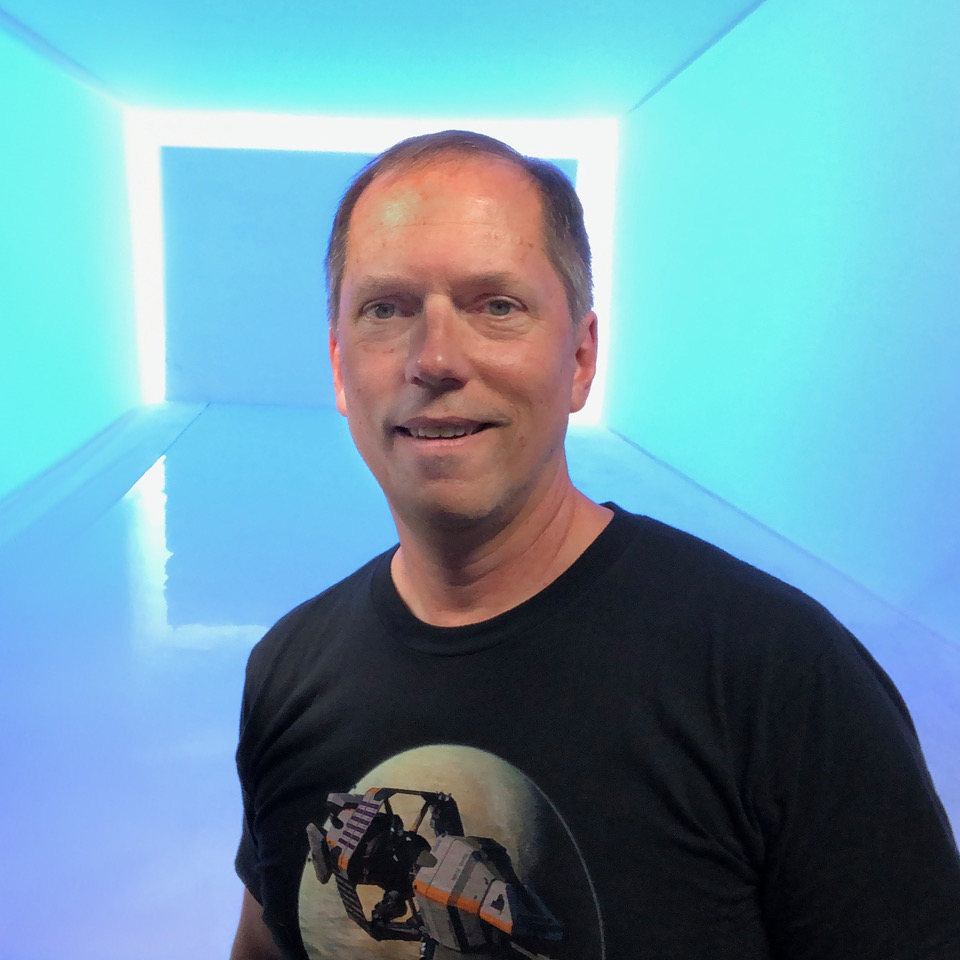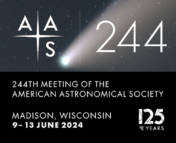In this series of posts, we sit down with a few of the keynote speakers of the 244th AAS meeting to learn more about them and their research. You can see a full schedule of their talks here and read our other interviews here!
Have you ever wondered about the breathtaking images from space? Astronomy offers some of the most visually stunning datasets in all of science, but there’s a lot more to the field than just breathtaking multi-wavelength images. A whole universe of complex concepts and intricate stories needs to be visualized and understood. Dr. Robert Hurt is tackling these exciting challenges head-on.

Trained as an astronomer, Dr. Hurt now tackles the universe as an Astrovizicist (short for astro-visualizer) at Caltech/IPAC. He firmly believes in the power of outreach and its vital role in the astronomy community. Dr. Hurt has combined his passions for astronomy, education, photography, art, and computer graphics to craft the visual public image of the Spitzer Space Telescope.
The work Dr. Hurt and his team have done for various missions has been featured in a wide range of print media, including National Geographic (NatGeo), Science, Nature, Sky & Telescope, Astronomy, and newspapers worldwide. His images and animations have appeared in numerous science documentaries, such as The Universe (History Channel) and The Known Universe (NatGeo), as well as on national news networks. Some of his imagery has even been used in television shows like Star Trek Voyager, Battlestar Galactica, and Stargate.
Creating the Universe
“Data alone isn’t always sufficient.” Dr. Hurt and his colleagues at Infrared Processing and Analysis Center (IPAC) and Jet Propulsion Laboratory (JPL) are developing processes to create illustrations that are not only meaningful and helpful but also compelling and engaging. “It’s all about communication,” he says. Artists, scientists, and communications officers must talk to each other, working collaboratively rather than in the traditional, sequential manner still standard in many places.
NASA’s Universe of Learning backs Dr. Hurt’s efforts. This science activation project brings together IPAC, JPL, Space Telescope Science Institute (STScI), and the Harvard-Smithsonian Center for Astrophysics. He’s on a mission to foster a community of practice for astrophysical visualizers. They’ve got a Google Group (you can join here), regular online events (check out their YouTube channel for recorded meetings), and have been hosting workshops at the winter AAS meetings for the past few years.
Dr. Hurt thinks this is a crucial skill for all astronomers to learn. “It is important to communicate what you are doing clearly and expressively,” he says, encouraging more early-career scientists to incorporate visualization into their work or outreach efforts. He’s witnessed outreach evolve from a niche, often frowned upon activity done by a few enthusiasts to a widely recognized and essential aspect of the profession, especially among young scientists.

Another one of Dr. Hurt’s passion projects is maintaining a website called Astropix. This public image library features stunning and impactful illustrations from all major surveys, complete with necessary metadata that is often lost when using Google search and finding low-resolution thumbnails instead. In astronomy visualization, this metadata is similar to photography metadata but includes additional fields specific to astrophysics, like its position in the sky and color table that lists the observations and the respective wavelengths that have gone into making that image.
Dr. Hurt has been developing metadata standards for astronomy images, specifically the Astronomy Visualization Metadata (AVM), which can also be utilized in planetariums. “Data to Dome” is a related standard based on AVM and is now compatible with planetarium software. This allows presenters to seamlessly integrate live feeds of images into their presentations, placing them accurately in the sky.
These standards also work with tools like AAS Worldwide Telescope, one of the first supporters of this initiative. This integration lets users drop images directly into the screen through Digital Sky Survey (DSS) and see their precise location and context in the sky. Many passionate individuals are dedicated to advancing this work, enhancing the tools and methods available for astronomy visualization.
Picking up the Brush
“I never intended to end up here!” Dr. Hurt exclaimed when asked about his journey into this unique field. His love for art began early, with an airbrush gift from his dad that he used to paint nebulae. After earning a Physics degree from UNC Chapel Hill, he moved to Los Angeles for graduate school at UCLA. Art remained his stress relief throughout his studies.
During his postdoc, he played with Photoshop, finding solace in the convenience of digital artwork over traditional ones! He also experienced the realities of a tenure-track position through his first postdoctoral advisor, Mary Barsony, realizing that the additional institutional burdens (especially grant writing) weren’t for him. For his second postdoc, he sought opportunities at Caltech’s IPAC, where he occasionally helped colleagues create posters and animations for press releases. This is where he discovered his passion for science communication.
He then joined the 2MASS team. “I really owe a lot to Mike Skrutski, the PI of 2MASS,” he says, who encouraged him to pursue more visualization work to support the project after seeing his posters. Following this, he transitioned to a full-time role as a visualization scientist with Spitzer.
Advice to Young Artists of the Universe
Dr. Hurt often talks to early career scientists at workshops who express frustration because their advisors discourage them from learning anything beyond processing data for papers. He believes these broader skill sets are crucial for effective communication within the scientific community. “It’s important for researchers to understand that these ancillary skills can be just as critical in their day-to-day work,” he emphasizes.
Moreover, Dr. Hurt highlights the practical necessity of developing a diverse skill set. With a limited number of tenured faculty positions available, he advises students to cultivate additional skills that can open doors to different career paths. “These other skill sets are also the things that people can use to branch into different directions,” he notes, stressing that such pursuits are essential for personal growth and professional flexibility.
Reflecting on his career, Dr. Hurt shares his pivotal decision: choosing a second postdoc that allowed him to branch into science support. He encourages students to remain open to all opportunities and to pursue their passions outside of research with the same dedication they apply to their scientific work. “I never knew that the things I was doing for fun would turn into my portfolio when I was offered this position for Spitzer,” he says. “Pursuing diverse interests can set you apart from others.”
To hear more about Astro-visualization and why data alone isn’t enough, tune into Dr. Hurts’s Plenary Lecture at 11:40 AM CT on Wednesday, June 12 at #AAS244!
Edited by: Jessie Thwaites
Featured Image Credit: AAS

